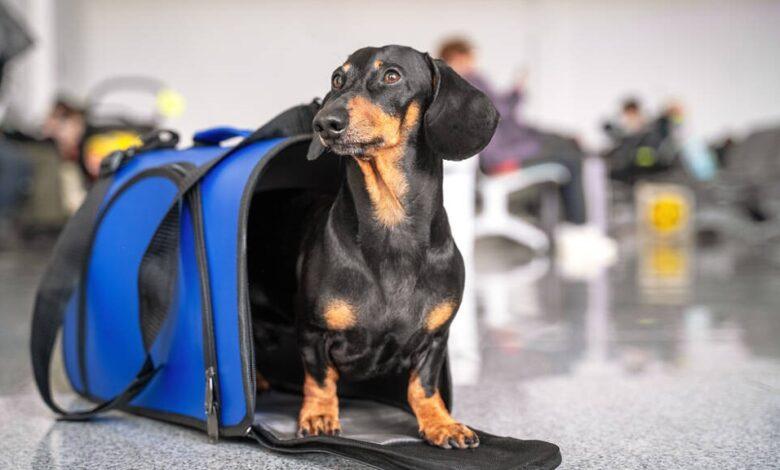Rules for importing pets from Ukraine to Poland that refugees need to know about

Since the beginning of the full-scale war, millions of Ukrainians have left the country, saving not only themselves and their children, but also their pets. Cats, dogs, rabbits, guinea pigs, birds, and even turtles — they all became part of evacuation convoys, train rides, overnight stays at train stations, and long queues at borders. For many Ukrainians, a pet is not just an animal, but a full-fledged member of the family, who is not left in trouble. That is why thousands of dogs and cats ended up with their owners in Poland, Germany, the Czech Republic, Romania, Hungary and other countries.
Poland, as one of the first countries to open its borders to Ukrainian refugees, also allowed simplified importation of animals at the beginning of the war. But as the situation normalized and the volume of emergency border crossings decreased, standard veterinary regulations of the European Union began to apply. This does not mean strict prohibitions, but provides a clear list of requirements that should be considered by everyone who plans to enter Poland with an animal.
What is needed to transport a pet to Poland
The movement of animals across the border is a legal and veterinary action that is subject to EU regulations, in particular Regulation (EU) No. 576/2013 on the non-commercial movement of domestic animals. Poland, as a member of the European Union, adheres to these norms. Therefore, Ukrainian refugees planning a trip to Poland with animals should keep several basic conditions in mind.
First, the microchip. This is the main condition for an animal to enter Poland. Identification must be carried out using an ISO 11784/11785 microchip, which is read at a frequency of 134.2 kHz. If the animal was vaccinated against rabies before microchipping, such vaccination is considered invalid – vaccination must be done after microchipping.
Secondly, a veterinary passport. This is a document that must include the owner’s details, a description of the animal, information about the chip, details of all vaccinations (especially against rabies), possible treatment for parasites, and – if necessary – a clinical examination. A Ukrainian veterinary passport is accepted in Poland if it is issued by a state clinic or has official stamps, and especially if the animal is entering from Ukraine as part of a family moving due to war.
Third, vaccination against rabies. This is another key requirement. Vaccination must be done at least 21 days before crossing the border and remain valid at the time of entry (usually its validity lasts up to 12 months, but it depends on the drug). If the vaccination is done after the microchipping, and not before, it is considered legitimate. This means that the pet can enter Poland without additional quarantine or checks.
Treatment for parasites is not mandatory, but veterinarians recommend it, especially for dogs that will be in contact with other animals or be outdoors. Processing must be completed 24-120 hours prior to entry and a corresponding entry must appear in the passport.
A health certificate is not formally required to cross the border, but in case of questions at customs or at the border veterinary service, such a certificate can be a confirmation that the animal has no symptoms of diseases or infections. This is especially true for older cats and dogs or animals with recent illnesses.
What happens after arriving in Poland
After crossing the border, Ukrainian refugees have the opportunity to register an animal at the Polish base. This is not required, but is recommended as an extra layer of protection. Free registration enables quick identification of an animal in the event of its loss, as well as information on veterinary care and the possibility of vaccination on the spot.
In some Polish cities, especially in the border regions, there are points for registration and initial inspection of animals, where free consultations, vaccines, and sometimes food or carriers are provided. Such initiatives are coordinated by municipalities, as well as Polish and international animal welfare organizations such as Fundacja Viva or RSPCA Poland.
What should be remembered before the trip
If you are planning a trip with an animal for the first time, do not postpone the chip and vaccination until the last minute. The smallest delays or inconsistency of documents can be grounds for refusal to cross the border or temporary isolation of the animal. All documents must be issued in Ukrainian or English. In the passport, the veterinarian must stamp, sign and date of vaccination, chip number, name of the drug, expiration date.
It is also important to consider the conditions of transportation of animals in public transport. For example, in “Ukrzaliznytsia” trains, buses to the border, or in evacuation buses abroad, there may be restrictions on the size of the animal or the need for a special carrier.
Poland remains one of the friendliest countries to Ukrainian refugees — and this applies not only to people, but also to their four-legged friends. But the war did not abolish veterinary requirements and safety logic when transporting animals across the state border. So that there are no difficulties and worries at the last moment, prepare in advance: get a chip, vaccination, passport, and, if necessary, a certificate from a veterinarian. And remember: in a foreign country, your pet, like you, needs comfort, protection and predictability – this can only be provided with a responsible approach.





